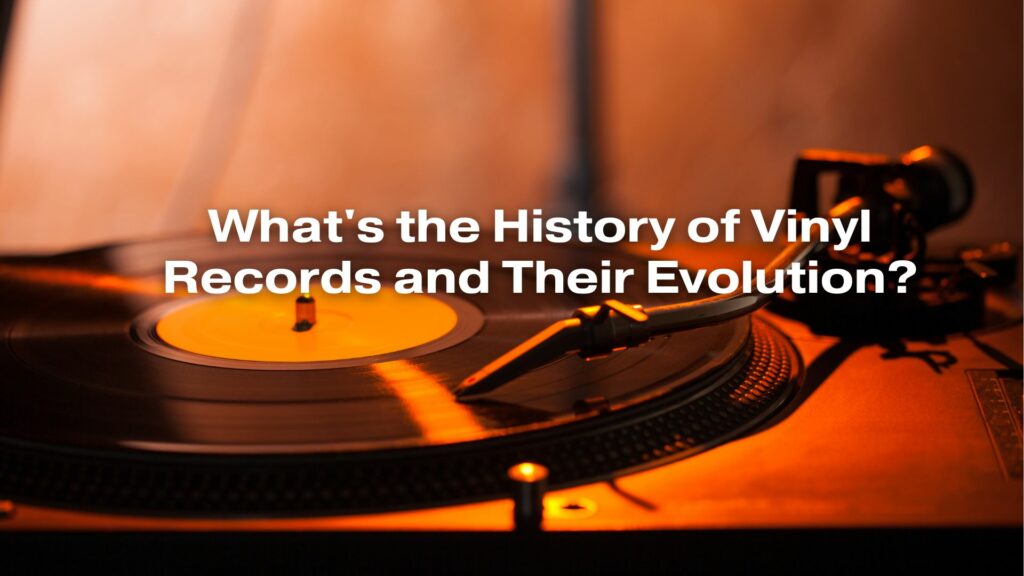The history of vinyl records is a fascinating journey through the evolution of audio recording technology. Vinyl records have played a significant role in the music industry for over a century. Here’s a brief overview of their history and evolution:
1. Early Sound Recording:
- The history of recorded sound dates back to the late 19th century. Thomas Edison’s invention of the phonograph in 1877 was one of the earliest attempts at sound recording. These early recordings were made on wax cylinders.
2. Shellac Records:
- In the early 20th century, the use of shellac as a material for records became prevalent. Shellac records, which played at 78 revolutions per minute (RPM), dominated the market for several decades. These records were relatively brittle and had limited playback time per side.
3. The Introduction of the Long-Playing (LP) Record:
- In 1948, Columbia Records introduced the 12-inch, 33 1/3 RPM long-playing (LP) record. This innovation allowed for longer playing times per side (up to 30 minutes), making it ideal for classical music and albums with multiple tracks.
4. The 45 RPM Single:
- In 1949, RCA Victor released the 7-inch, 45 RPM single, which became the standard format for single songs. It was known for its quick start time and better sound quality compared to 78 RPM records.
5. The Vinyl Era:
- By the 1950s, vinyl records had become the primary format for recorded music. These records were more durable and had better sound quality than shellac records. The term “vinyl record” is commonly used to refer to any record made from vinyl materials, although technically, the 78 RPM records were made from shellac.
6. Stereo Sound and Hi-Fi:
- The 1950s also brought innovations in stereo recording and playback, enhancing the listening experience. The advent of high-fidelity (Hi-Fi) systems improved the overall audio quality of vinyl records.
7. The Decline and Rise of Vinyl:
- Vinyl records remained popular through the 1960s and 1970s but faced competition from cassette tapes and compact discs (CDs) in the 1980s and 1990s. Many music enthusiasts shifted to these newer formats due to their portability and digital sound quality.
- However, vinyl never disappeared entirely. In the 21st century, vinyl experienced a resurgence in popularity. Audiophiles, collectors, and music enthusiasts embraced vinyl for its analog warmth and tactile experience.
8. Vinyl Today:
- Vinyl records continue to be manufactured and enjoyed today. They are appreciated for their large album artwork, analog sound, and tactile appeal.
- In addition to new releases, vinyl enthusiasts also seek out vintage and rare records, making record collecting a vibrant subculture.
The history of vinyl records reflects the evolution of audio recording and playback technologies, from the early days of cylinders and shellac records to the enduring appeal of vinyl in the digital age. Vinyl records have not only left an indelible mark on the music industry but also on the culture and aesthetics of music appreciation.


